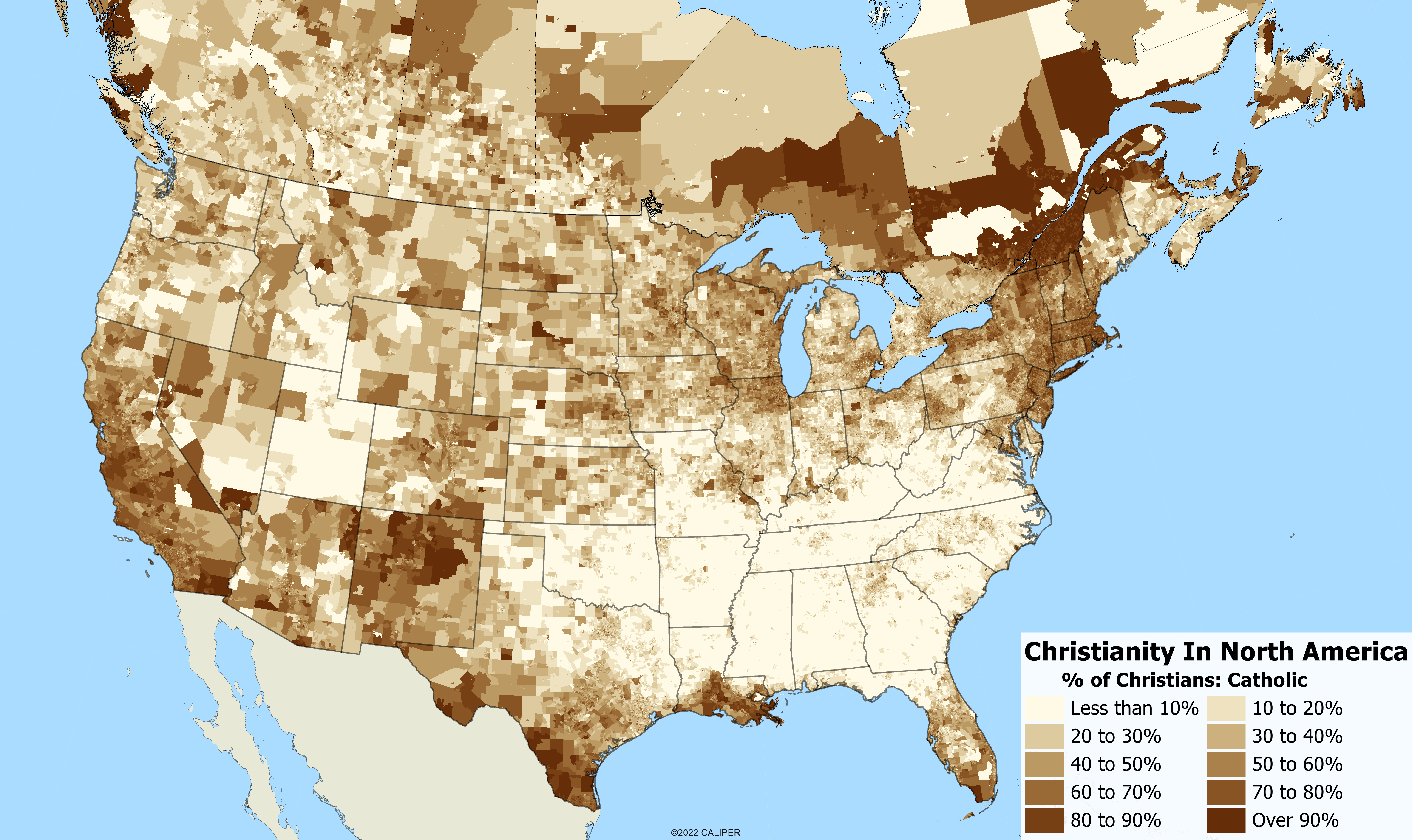As a part of the 2023B release, our religious affiliation data will be available for users. When you look at religious affiliations across the country, and into Canada, an interesting map emerges based on settlement patterns from centuries ago and current day immigration.
For our map today, we looked at Christianity in North America, specifically those identifying as Catholic in the US and Canada. In the United States, the heavily Catholic areas are largely in the southwest and south Florida, where many individuals with Spanish origin have moved, and parts of the northeast. The rest of the eastern US was largely under British control when it was colonized, so they tended to be protestant and continue to be so to this day. The upper Midwest is an interesting mix, as many of the areas were settled by people from non-English countries, like Ireland, Germany, Scandinavia, and Eastern Europe.
In Canada, the areas that predominately were colonized by the French continue to be Catholic today, including Quebec, Northern Ontario, and much of New Brunswick. In the west, specifically in British Columbia, which was colonized by Great Britian, has just a few areas heavily populated by Catholics.

We released Religious Affiliation after customer requests for the data. This small database fills an important gap in the AGS core demographics series. Religious affiliation has not been addressed by the census bureau in many decades, and most sources are based on consumer panel data or political polling and have minimal geographic content. Unlike others who carry this data, we modeled the data to the block group level using the location of religious establishments classified by type of religion, paying attention to the religious customs of selected groups (e.g., Jewish, Muslim, Mennonite, Amish) and allocated what is a county level database to the local level.
Religious affiliation can have significant impacts on consumer spending and behavior. For some retail sectors, it can have a critical impact on product mix, shopping style, and even staffing. One segment of retail that this data will be critical for is grocery, as many religions often come with times of dietary needs. As an example, for Boston, grocery stores in high Catholic areas might consider changing their products to include more Seafood during lent.


Recent Comments